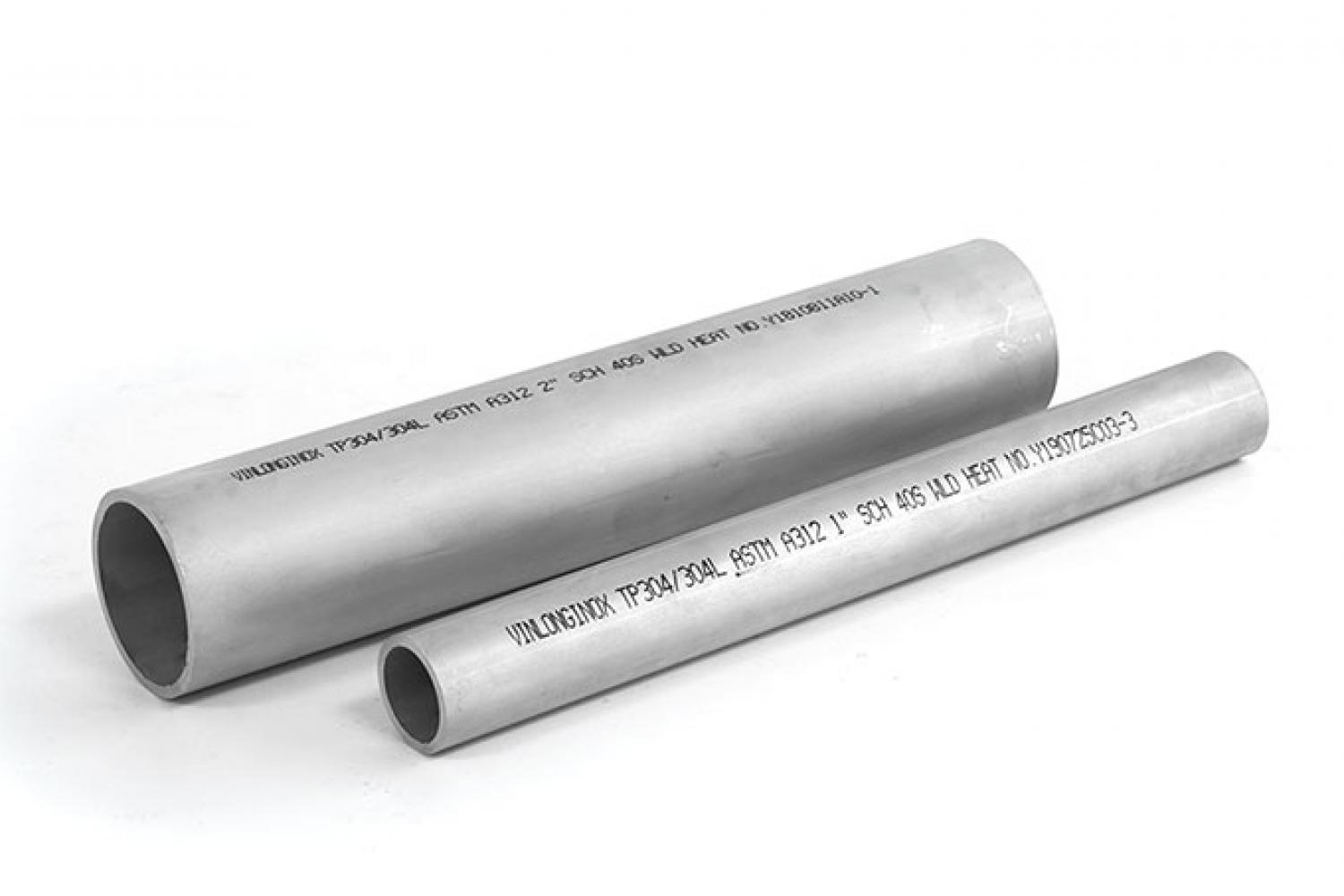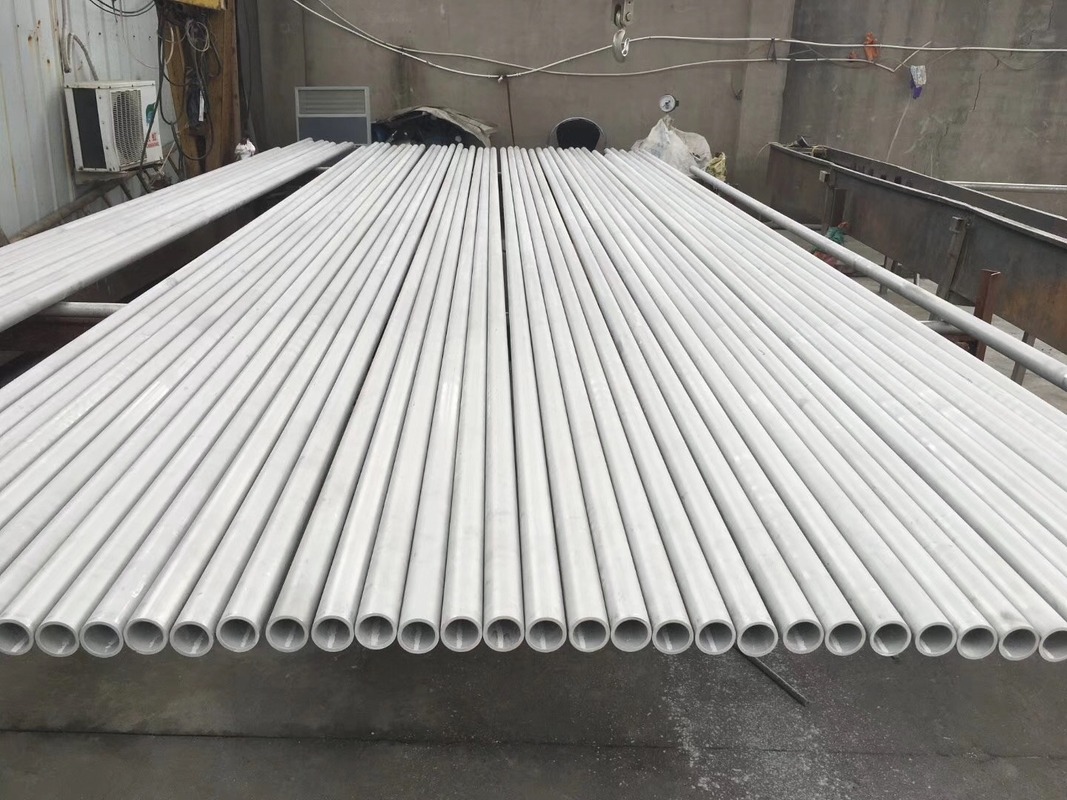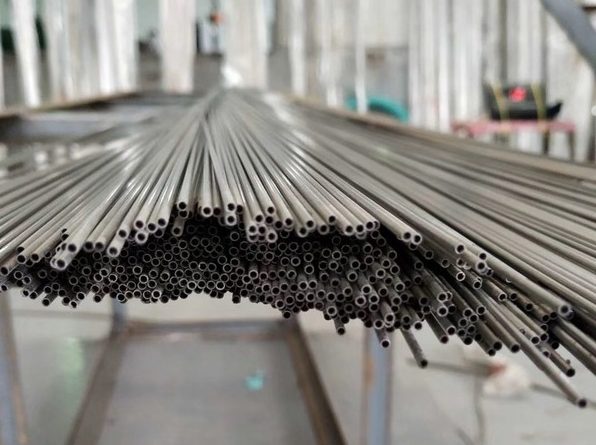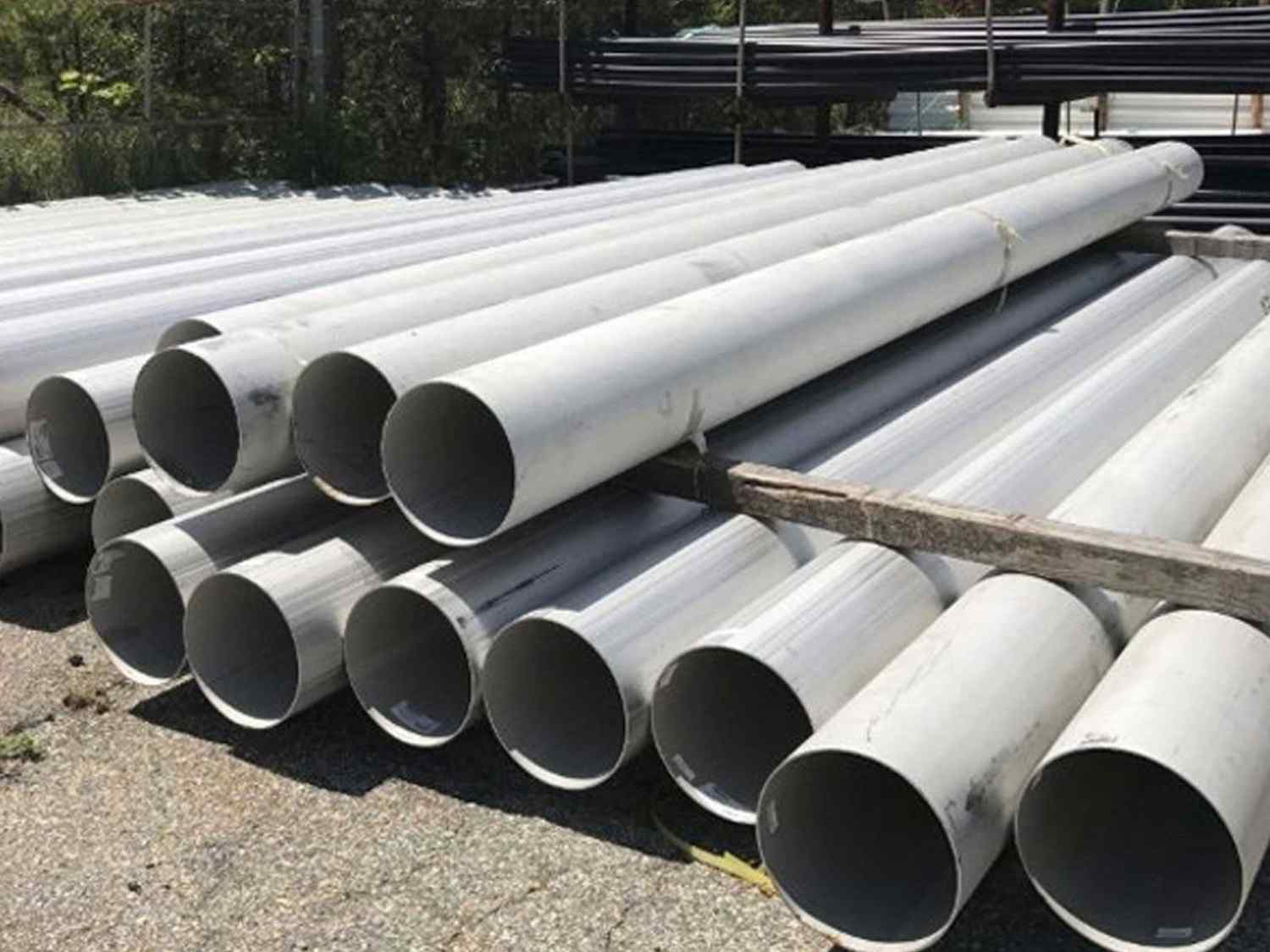ASTM A312 Stainless Steel Pipe
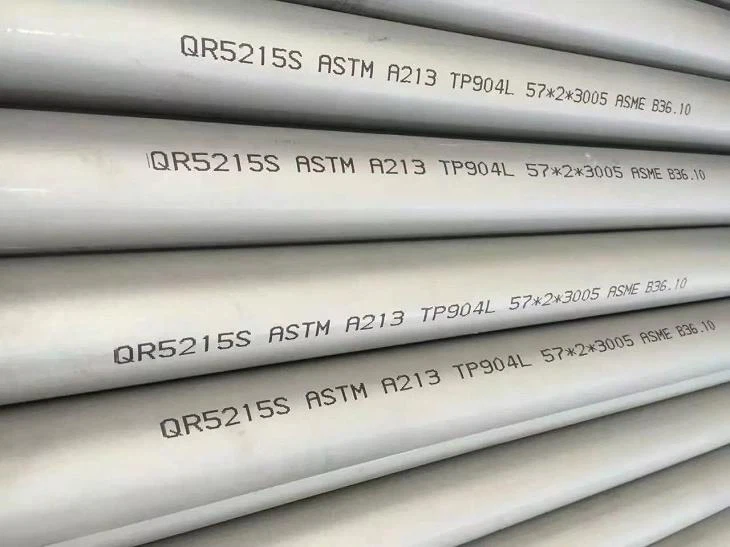
ASTM A312 Stainless Steel Pipe
Introduction
ASTM A312 is the standard specification for seamless, straight-seam welded, and heavily cold worked welded austenitic stainless steel pipe intended for high-temperature and general corrosive service. Stainless steel pipes covered under this specification are widely used across various industries, including chemical processing, oil and gas, power generation, and food and beverage. The specification ensures that the pipes meet stringent requirements for chemical composition, mechanical properties, and manufacturing processes to deliver high performance in demanding environments.
ASTM A312 Specifications

Scope
ASTM A312 covers seamless and welded austenitic stainless steel pipes in various grades, including TP304, TP304L, TP316, TP316L, TP321, TP347, and others. These pipes are suitable for high-temperature and corrosive service, ensuring long-term durability and reliability.
Chemical Composition
The chemical composition of ASTM A312 stainless steel pipes varies depending on the grade. The following table summarizes the typical chemical composition for some common grades:
| Element | TP304 | TP304L | TP316 | TP316L |
|---|---|---|---|---|
| Carbon (C) | 0.08 max | 0.03 max | 0.08 max | 0.03 max |
| Manganese (Mn) | 2.00 max | 2.00 max | 2.00 max | 2.00 max |
| Phosphorus (P) | 0.045 max | 0.045 max | 0.045 max | 0.045 max |
| Sulfur (S) | 0.030 max | 0.030 max | 0.030 max | 0.030 max |
| Silicon (Si) | 1.00 max | 1.00 max | 1.00 max | 1.00 max |
| Chromium (Cr) | 18.0-20.0 | 18.0-20.0 | 16.0-18.0 | 16.0-18.0 |
| Nickel (Ni) | 8.0-11.0 | 8.0-13.0 | 10.0-14.0 | 10.0-14.0 |
| Molybdenum (Mo) | – | – | 2.00-3.00 | 2.00-3.00 |
Mechanical Properties
The mechanical properties of ASTM A312 stainless steel pipes ensure their ability to withstand high temperatures and pressures. The typical mechanical properties include:
- Tensile Strength: Minimum 515 MPa (75 ksi)
- Yield Strength: Minimum 205 MPa (30 ksi)
- Elongation: Minimum 35% in 2 inches
Schedule
ASTM A312 pipes are available in various schedules, indicating the wall thickness. Common schedules include:
- Schedule 5S
- Schedule 10S
- Schedule 40S
- Schedule 80S
The choice of schedule depends on the specific application requirements, including operating pressure and temperature.
Technical Details, Dimensions, and Tolerances
Dimensions
The dimensions of ASTM A312 pipes are specified by their outside diameter (OD) and wall thickness. The standard sizes range from 1/8 inch to 24 inches in outside diameter. Common dimensions include:
- Outside Diameter (OD): 1/8 inch to 24 inches
- Wall Thickness: Specified according to the schedule, ranging from 0.035 inches (Schedule 5S) to 0.500 inches (Schedule 80S).
Tolerances
ASTM A312 specifies precise tolerances to ensure the pipes meet stringent quality and performance standards. These tolerances include:
- Outside Diameter (OD): ±0.1% of the specified OD
- Wall Thickness: ±10% of the specified wall thickness
- Length: Pipes are typically supplied in random lengths of 5-7 meters, with a tolerance of ±50 mm.
Wall Thickness & Tolerance
The wall thickness of ASTM A312 pipes is critical for their performance in high-temperature and corrosive applications. Tolerances on wall thickness are essential to ensure consistent performance. The standard tolerances include:
- Wall Thickness Tolerance: ±10% of the specified wall thickness.
- Minimum Wall Thickness: The minimum wall thickness must not be less than 87.5% of the specified nominal wall thickness.
Materials and Manufacture
Materials
ASTM A312 pipes are made from austenitic stainless steels, which are known for their excellent corrosion resistance, high strength, and good weldability. Common grades include TP304, TP304L, TP316, and TP316L, each offering specific advantages for different applications.
Manufacture
The manufacturing process for ASTM A312 pipes involves several steps to ensure the highest quality and performance:
- Seamless Pipe Production: Seamless pipes are produced using extrusion or rotary piercing, followed by hot rolling.
- Welded Pipe Production: Welded pipes are produced by forming and welding strips of stainless steel. The weld seam is typically subjected to heat treatment to ensure homogeneity and strength.
- Cold Working: Cold working processes such as cold drawing or cold pilgering may be used to achieve the desired dimensions and surface finish.
- Heat Treatment: The pipes are subjected to heat treatment to refine their microstructure and enhance their mechanical properties. Typical heat treatments include solution annealing and quenching.
Tests
To ensure the quality and performance of ASTM A312 pipes, several tests are conducted:
Hydrostatic Test
A hydrostatic test is performed to verify the pipes’ ability to withstand internal pressure. The pipes are filled with water and pressurized to a specified level, typically 1.5 times the design pressure, to check for leaks and structural integrity.
Nondestructive Testing (NDT)
Nondestructive testing methods are used to detect internal and surface defects without damaging the pipes. Common NDT methods include:
- Ultrasonic Testing: High-frequency sound waves are used to detect internal flaws.
- Eddy Current Testing: Electromagnetic induction is used to detect surface defects.
- Radiographic Testing: X-rays or gamma rays are used to inspect the internal structure.
Mechanical Tests
Mechanical tests are conducted to verify the pipes’ mechanical properties, including:
- Tensile Test: Measures tensile strength, yield strength, and elongation.
- Hardness Test: Verifies hardness levels to ensure compliance with specified limits.
- Flattening Test: Checks the pipe’s ability to withstand deformation without cracking.
Heat Treatment
Heat treatment is a critical step in the manufacturing process of ASTM A312 pipes. The specific heat treatment process depends on the grade and intended application:
Solution Annealing
Solution annealing involves heating the pipes to a temperature above the critical temperature (usually around 1040-1120°C) and then rapidly cooling them in water or air. This process dissolves precipitated carbides and restores the material’s corrosion resistance and ductility.
Stress Relieving
Stress relieving involves heating the pipes to a temperature lower than the critical temperature (usually around 400-500°C) and then cooling them slowly. This process relieves internal stresses caused by manufacturing processes such as cold working.
Conclusion
ASTM A312 stainless steel pipes are essential components in high-temperature and corrosive applications across various industries. Their superior mechanical properties, excellent corrosion resistance, and ability to withstand extreme conditions make them indispensable for efficient and safe operation. Adherence to ASTM A312 specifications ensures these pipes meet stringent quality and performance standards, providing reliability and longevity in demanding environments. Through rigorous manufacturing processes, precise dimensions and tolerances, and comprehensive testing and heat treatment, ASTM A312 pipes deliver exceptional performance in the most challenging conditions.

